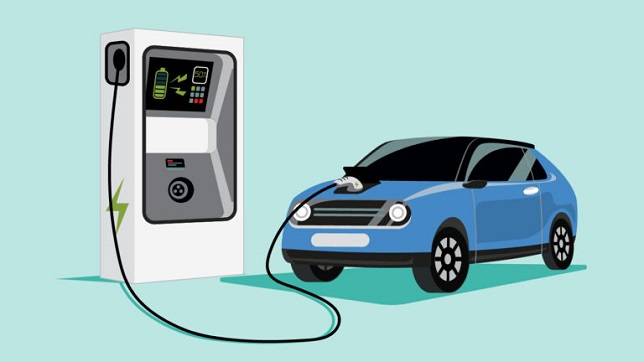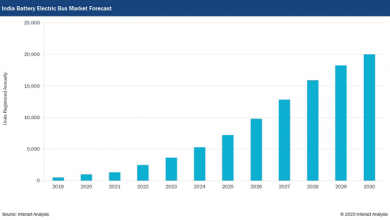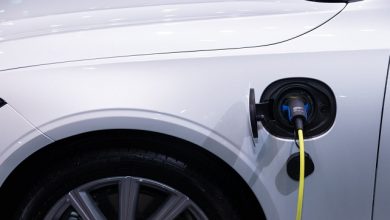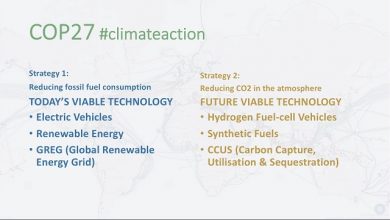Firefighting with AI: How tech can prevent EV battery explosions?

Since the advent of mass-produced plug-in electric vehicles, there have been an increasing number of fire related incidents. High-voltage lithium-ion batteries in EV cars can short circuit, break down, and spontaneously combust. To add fuel to fire, pardon the irony, lithium-ion fires are difficult to control and create hazardous smoke.
Several well-known brands have come under investigation for such incidents.
Because of these incidents , the United States Department of Transportation’s National Highway Traffic Safety Administration (NHTSA) launched a new Battery Safety Initiative study into EV car fires in 2021. The goal was to drive the industry toward safer batteries and fewer occurrences involving energy storage devices.
The issue of fire hazards is global and pervasive in all kinds of vehicles and not just passenger cars. Incidents involving Electric scooters have become a significant concern for India’s electric vehicle sector. In early 2022, at least four videos of e-scooters on fire went viral, raising major concerns about the safety of green two-wheelers.
Flourishing in Flames
The global EV battery market is expected to increase at a CAGR of 19.0% between 2022 and 2027, from USD 56.4 billion to USD 134.6 billion. Rising demand for electric cars, developments in battery technology, favorable government policies and regulations, and the launch of new plug-in EV models are driving the market for EV batteries.
Because of growing worries about the environmental effect of conventional autos, governments worldwide are supporting the use of vehicles that use alternative fuels. EVS are zero-emission vehicles that are becoming increasingly popular for environmentally friendly public transit across the world. To encourage the usage of EVs, numerous national governments offer financial incentives such as tax exemptions, subsidies, free charging, and lower parking/toll charges for EVs.

Leading EV markets including China, the United States, and Germany are investing extensively in EV charging infrastructure as well as R&D for faster and more effective charging processes. Automakers are expected to invest more in order to fulfill the rising demand for EVs. Companies with considerable R&D spending for EV development include Tesla, Volkswagen, Ford, Nissan, BMW, and General Motors.
OEMs provide a diverse range of electric automobiles, from compact hatchbacks like the Leaf to premium sedans like the Tesla Model 3. The market for electric cars has expanded because of the vast number of consumers enticed by the range of products.
In October 2021, GM announced plans to invest USD 35 billion with the objective of producing and selling more than one million EVs and other technologies by 2025. The firm intends to be all-electric by 2035. In November 2021, Ford announced that it will increase its annual EV production capacity to 600,000 by 2023. It plans to deliver 40% electrified automobiles by 2030. Volkswagen also announced plans to invest USD 86.3 billion in EV development through 2030. Other companies, such as Tesla, Nissan, and BMW, have made significant developments and planning for the projected EV demand over the next 5-10 years.
Sitting on a Bombshell or Matchbox?
Battery explosion or fire does not always require an abnormal energy surge or much time. These unfortunately have been occurring without any warning and it just takes the shortest amount of time to unleash every bit of energy trapped within.
If a Li-ion battery has a storage capacity of 1kWh, it will be self-sufficient for combustion if all of it’s energy is released in a couple of seconds. Every battery has an anode, cathode, and separator. The separator divides the other two – anode and cathode while allowing their ions to transfer. If the separator breaks or gets damaged, a short circuit occurs, it can result in a fire or an explosion.
Battery fires and explosions because of separator damage which can happen from electrical instability and external shocks.
Electrical instability occurs when a battery is charged or drained above its rated capacity. There are two ratings for rechargeable batteries: undervoltage and overvoltage. The separator is destroyed if the battery exceeds any of the two ratings while charging.
The anodic and cathodic processes form crystal-like material surrounding the separator during deep discharge. When the battery is allowed to charge to the same capacity it produces, more heat is created inside the battery, causing the separator to be damaged. Internal electrical misbalance occurs when an electric vehicle undergoes deep discharge or overcharging cycles. This causes spontaneous combustion and in some cases an explosion.
External shock occurs when the battery is subjected to external forces, stretches, or buries. External shocks may not instantly trigger possible battery damage, but after a period, it will either explode or cause significant harm. Because the battery separator is very volatile to external shocks, an electric vehicle accident will almost certainly end in an explosion as the material used for the body is often extremely thin and incapable of withstanding major shocks.
Needless to say, continued incidents related to battery fires adversely impact a brand’s image but also raise questions about the safety of EVs. The industry needs innovative solutions to attenuate this problem
Solving Tech’s Hazards with Tech
Global battery production is expected to exceed 400 GWh by 2022. With the growing demand for batteries, there is a growing need need for improved battery management. A robust battery management system (BMS) is essential for a battery’s dependable and efficient operation.
BytEdge proprietary tech works on two fronts to improve both the remaining useful life (RUL) of the battery and prevent explosions. The DesignEdge solution enables rapid prototyping and virtual testing of designs while the BMS system gives insights into the performance and safety of current operating batteries. (different font color & italics)
BMS Solution for RUL Estimation
The commonly available BMS solutions for EVs estimate the remaining useful life (RUL) with an accuracy of around 80% which leaves much room for errors. This comes as a consequence of limited real-time data on driver behavior, road conditions, environmental conditions, etc.
We collected vehicle driving and BMS historical data of over 200 cars for 2 years to build and train an intelligent predictive algorithm. Within testing scenarios, we achieved an accuracy of 84% for RUL which can be pushed to 90% with additional data which shouldn’t be a problem for OEMs and automotive manufacturers.
Thermal Management with Simulation
Post simulation we use CFD Analysis to predict cell temperature variation in 3D Environment, flow distribution in the pack, and temperature distribution in cells. This helps battery manufacturers, product designers, and quality managers run drive cycles and optimize thermal management strategies with increased accuracy.
Thus, providing early warnings on high temperatures and alerts for possible fire incidences and proactive faulty battery replacement.
Electric vehicles are here to stay despite their current challenges. The fight against climate change is already a war now and global warming can only be controlled and reduced with a change in mindset, a global commitment and clean technology.
Author:

Dr. Amit Shekhar
Founder & CEO
BytEdge
BytEdge provides a do-it-yourself ML & AI platform that integrates digital twinning with real time and augmented data-based analytics to optimize product designs and their failure predictions leading to, enhanced safety, a reduced carbon footprint and a significant reduction in design to manufacturing cycle times across automotive and manufacturing industries.
Published in Telematics Wire





